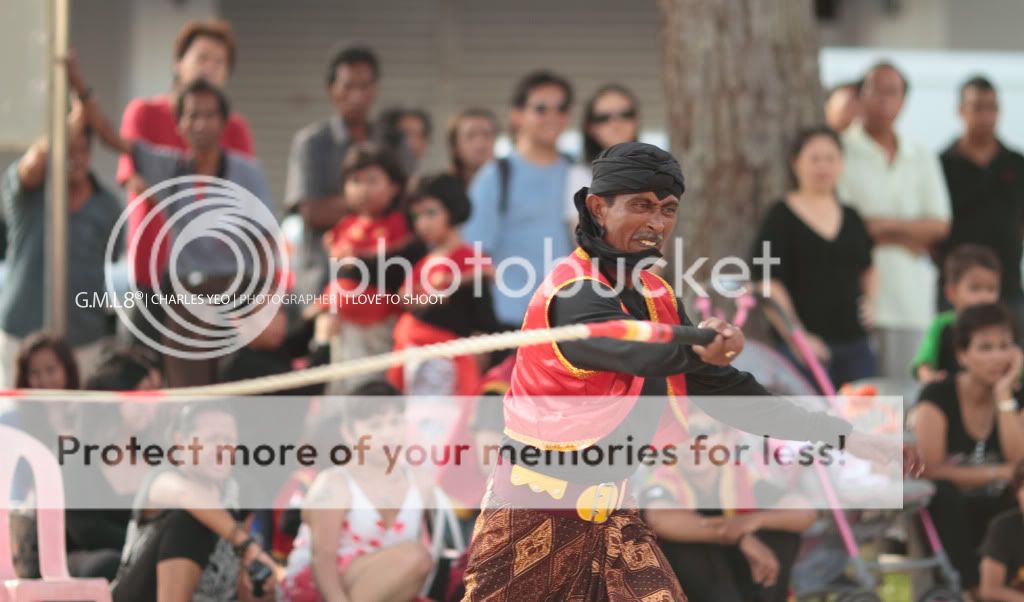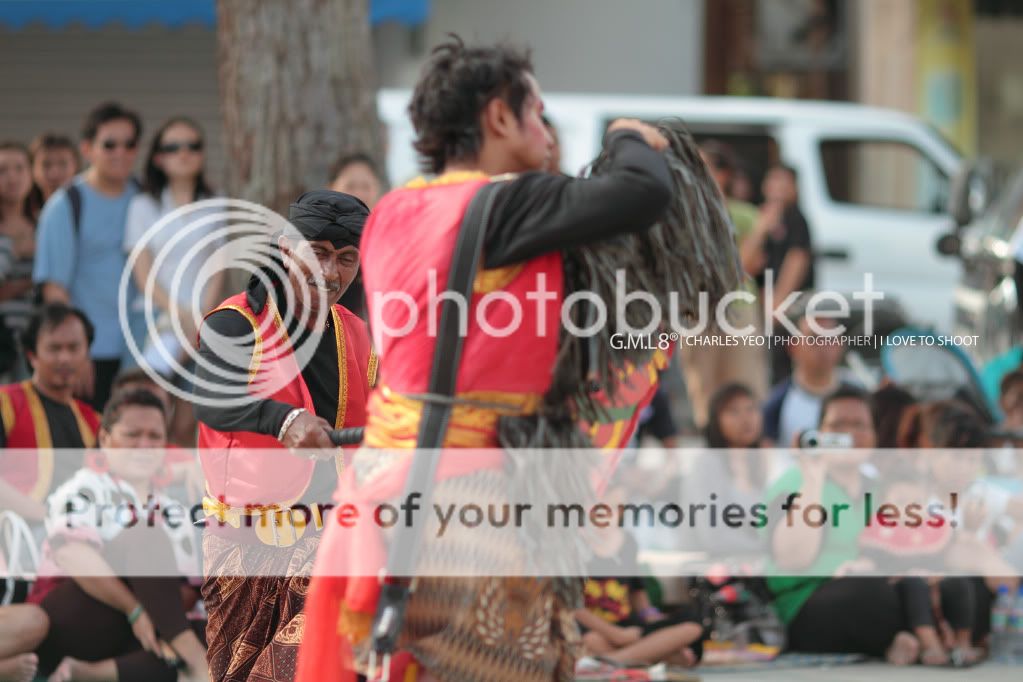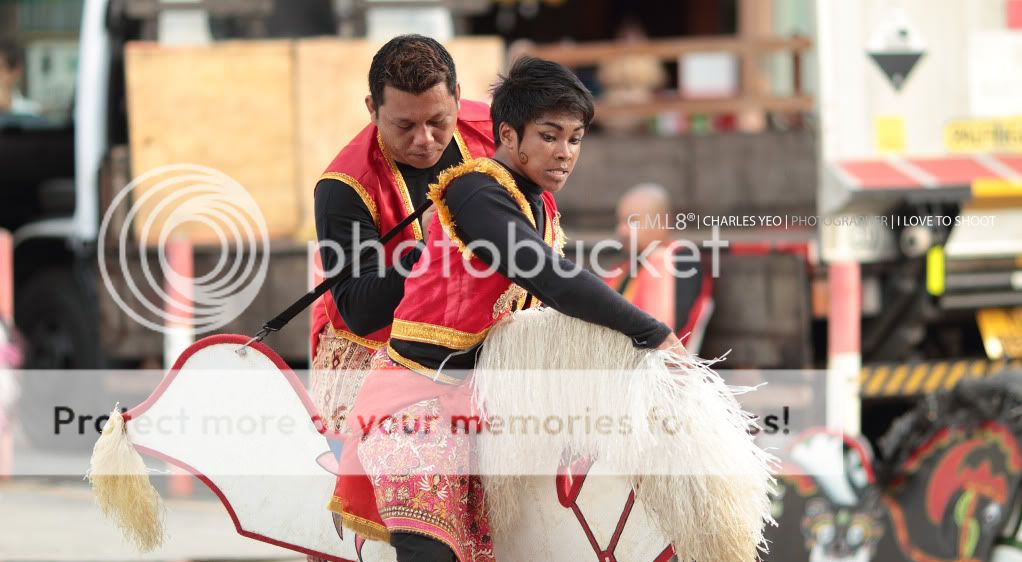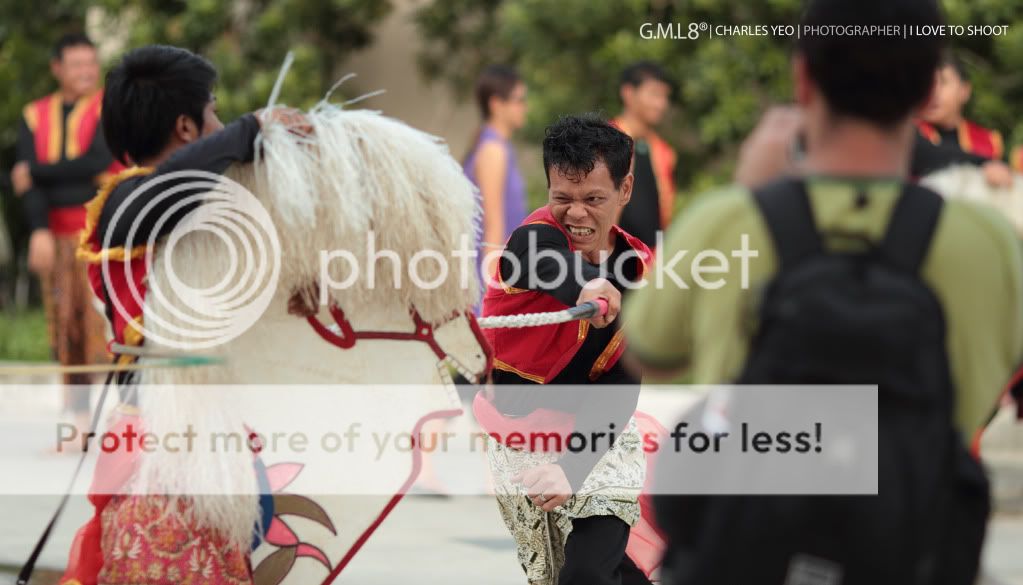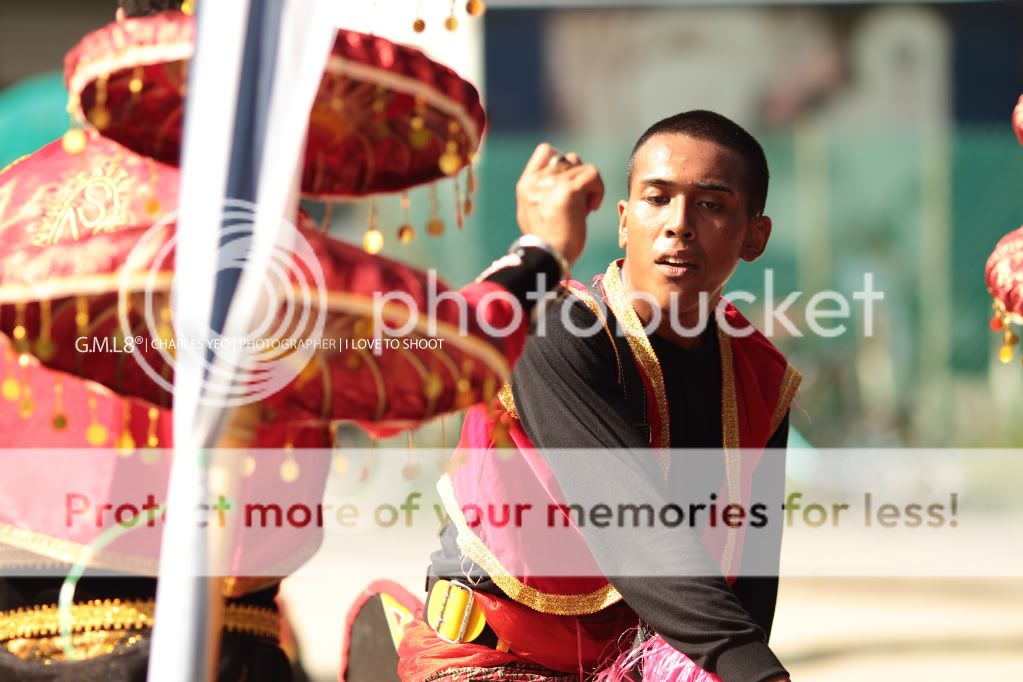Kuda Kepang Dance
While doing so locations reccee at joo chiat, i saw this event that i had never seen before in Singapore. Here are some shots that i had took. Hope you peeps like it. CHEERS!
Description of Kuda Kepang Dance 2010 @ Joo Chiat
Kuda Kepang is a traditional game much enjoyed by the malay community, especially those from the Javenese descendents. Kuda Kepang is a woven statue that literally looks like a legless horse. It is typically made from woven strands of bamboo or animal hide that is coloured and patterned to make it more attractive.
Usually, a group of Kuda Kepang performers are made up of 10 to 15 dancers. One of the dancers, called a dayang will lead the dance. In the early part, all of the dancers movements are controlled by the dayang, using a thin strand of rope. This performance is typically displayed at communal ceremonies to celebrate auspicious occasions such as welcoming honoured guests, weddings and festivities. There are several schools of thought on how the dance originated.
There is a theory that links the origin of the dance to Wali Songo, who lived in Java during the 15th Century. In his efforts to expand the teachings of Islam in the depths of the Javanese rural communities, Wali Songo was facing difficulties to get connected to the people there. He had an idea to dance whilst on horseback. Over time, the woven statue made of bamboo or animal hide replaced the real horses initially used. Another school of thought related the origins of the dance to Saidina Ali. The dance was to emulate the movement of Saidina Alis armies during battle, and that was how Kuda Kepang came to be.
Others believe the origins had a link to the mystic realm. A celestial horse by the name of Kuda Sembrani was slated to have come down from the heavens to Java to look for a lost friend. When reunited, both danced in joyous unification. According to folklore, Kuda Kepang performers can sometimes be overwhelmed by mystical forces. Therefore, a special ceremony must be performed before the dance can begin. Failing which, unwanted accidents may befall the performers or the spectators watching the show. The special ceremony entails rituals of spirit worship. Once that is out of the way, the witch doctor or bomoh, will proceed to cast a spell to ward off unwanted mystical attention towards the performance stage, typically 40 metres by 60 metres.
The bomoh will also prepare a feast for the spiritual guardian. The feast typically constitutes of coconut, rice, ripe banana, incense, white cloth, needle, thread, white feathered chicken, eggs and a special blend of pot pourri of fresh flowers and herbs. The minimum number of dancers is 9, to a maximum of 15.
The dancers are usually male only. The dance choreography is unique to the teacher who taught the group personally. The often performed choreography includes Sola dance, Selendang Pak Tani, Pucuk Rebung, Perjuangan, Mempertahankan Diri and so forth. The dance movement is called Lenggang Kiprah.
An often interesting aspect of the performance includes the dancers succumb to a trance like state once the official performance is over. In their trance, the dancers would begin a peculiar sequence of movements that would not normally be possible under a conscious state. For example, jumping to the height of six to seven feet, traverse on a length of bamboo or a slippery piece of wood or on a length of rope, and also peeling a coconut of its husk using teeth. During their trance, the accompanying symphony of the performance music is continued. Otherwise, the dancers will grow restless and starts to attack the musicians.
When the entire affair reaches its crescendo and starts to grow out of control, the bomoh will recite incantations to the crown of the head or into the ears of performers, once they are caught and subdued by trained handlers. The dancers will then gained their conscious mind and be in a state of tiredness. It is believed that other than as a performance for entertainment, Kuda Kepang dance can also be used to heal mystical ailments such as possession by evil spirits, haunting by the deceased and so forth.
It is also believed that the Kuda Kepang should be kept at a special place. If left lying around, the spirit of the Kuda Kepang will grow restless and run amok, which will have adverse effects for future performances. The typical musical instruments that perform the accompanying music are anklong (main instrument), gendang, gong (a bronze disc instrument), kinong (a smaller version of the gong), jidor (similar to a rebana besar), soron kecil (a copper instrument shaped like a bamboo) and bonang (made of copper, with a bump in the middle). However, not all of the equipment will be used within a performance. The instrument selection depends on the discretion of the music troupe. The costume choices meanwhile is left to the performers, but it has to be matching.
#01
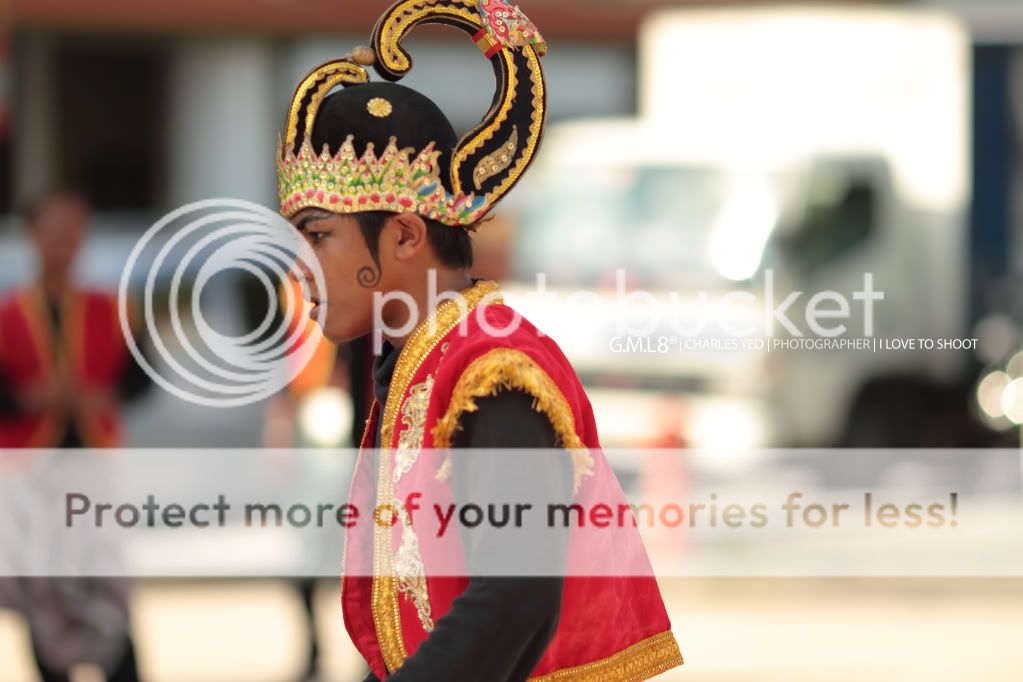
#02
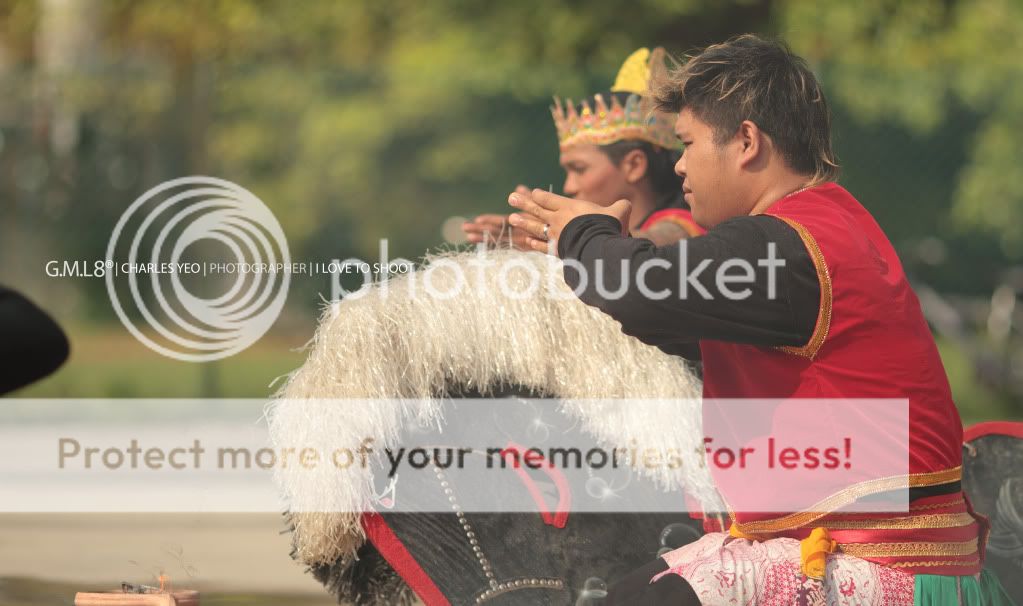
#03
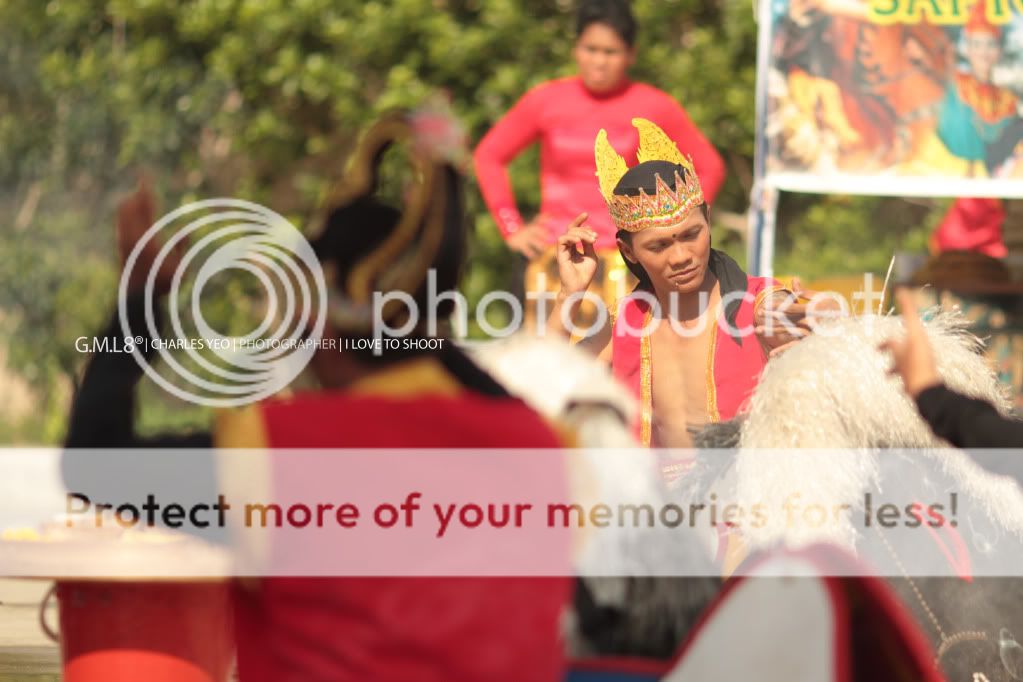
#04
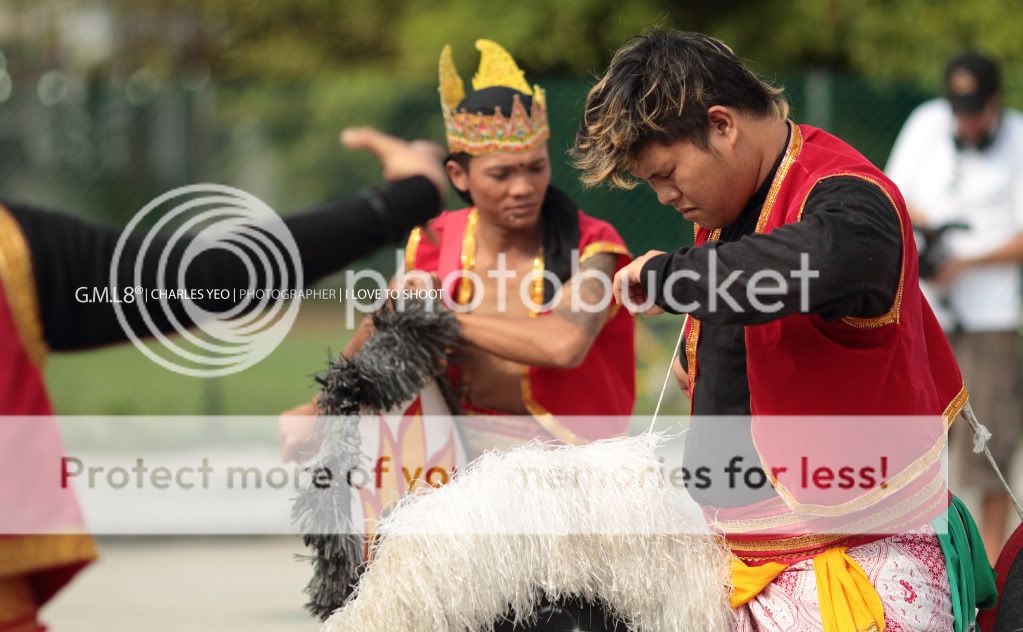
#05
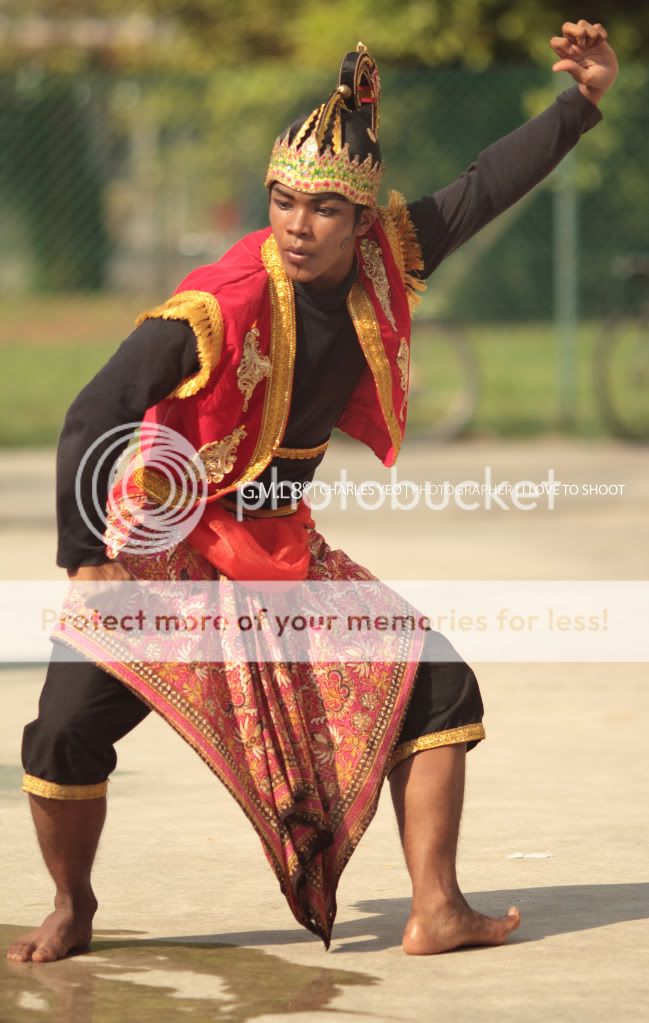
You can see more at my PHOTOBUCKET
While doing so locations reccee at joo chiat, i saw this event that i had never seen before in Singapore. Here are some shots that i had took. Hope you peeps like it. CHEERS!
Description of Kuda Kepang Dance 2010 @ Joo Chiat
Kuda Kepang is a traditional game much enjoyed by the malay community, especially those from the Javenese descendents. Kuda Kepang is a woven statue that literally looks like a legless horse. It is typically made from woven strands of bamboo or animal hide that is coloured and patterned to make it more attractive.
Usually, a group of Kuda Kepang performers are made up of 10 to 15 dancers. One of the dancers, called a dayang will lead the dance. In the early part, all of the dancers movements are controlled by the dayang, using a thin strand of rope. This performance is typically displayed at communal ceremonies to celebrate auspicious occasions such as welcoming honoured guests, weddings and festivities. There are several schools of thought on how the dance originated.
There is a theory that links the origin of the dance to Wali Songo, who lived in Java during the 15th Century. In his efforts to expand the teachings of Islam in the depths of the Javanese rural communities, Wali Songo was facing difficulties to get connected to the people there. He had an idea to dance whilst on horseback. Over time, the woven statue made of bamboo or animal hide replaced the real horses initially used. Another school of thought related the origins of the dance to Saidina Ali. The dance was to emulate the movement of Saidina Alis armies during battle, and that was how Kuda Kepang came to be.
Others believe the origins had a link to the mystic realm. A celestial horse by the name of Kuda Sembrani was slated to have come down from the heavens to Java to look for a lost friend. When reunited, both danced in joyous unification. According to folklore, Kuda Kepang performers can sometimes be overwhelmed by mystical forces. Therefore, a special ceremony must be performed before the dance can begin. Failing which, unwanted accidents may befall the performers or the spectators watching the show. The special ceremony entails rituals of spirit worship. Once that is out of the way, the witch doctor or bomoh, will proceed to cast a spell to ward off unwanted mystical attention towards the performance stage, typically 40 metres by 60 metres.
The bomoh will also prepare a feast for the spiritual guardian. The feast typically constitutes of coconut, rice, ripe banana, incense, white cloth, needle, thread, white feathered chicken, eggs and a special blend of pot pourri of fresh flowers and herbs. The minimum number of dancers is 9, to a maximum of 15.
The dancers are usually male only. The dance choreography is unique to the teacher who taught the group personally. The often performed choreography includes Sola dance, Selendang Pak Tani, Pucuk Rebung, Perjuangan, Mempertahankan Diri and so forth. The dance movement is called Lenggang Kiprah.
An often interesting aspect of the performance includes the dancers succumb to a trance like state once the official performance is over. In their trance, the dancers would begin a peculiar sequence of movements that would not normally be possible under a conscious state. For example, jumping to the height of six to seven feet, traverse on a length of bamboo or a slippery piece of wood or on a length of rope, and also peeling a coconut of its husk using teeth. During their trance, the accompanying symphony of the performance music is continued. Otherwise, the dancers will grow restless and starts to attack the musicians.
When the entire affair reaches its crescendo and starts to grow out of control, the bomoh will recite incantations to the crown of the head or into the ears of performers, once they are caught and subdued by trained handlers. The dancers will then gained their conscious mind and be in a state of tiredness. It is believed that other than as a performance for entertainment, Kuda Kepang dance can also be used to heal mystical ailments such as possession by evil spirits, haunting by the deceased and so forth.
It is also believed that the Kuda Kepang should be kept at a special place. If left lying around, the spirit of the Kuda Kepang will grow restless and run amok, which will have adverse effects for future performances. The typical musical instruments that perform the accompanying music are anklong (main instrument), gendang, gong (a bronze disc instrument), kinong (a smaller version of the gong), jidor (similar to a rebana besar), soron kecil (a copper instrument shaped like a bamboo) and bonang (made of copper, with a bump in the middle). However, not all of the equipment will be used within a performance. The instrument selection depends on the discretion of the music troupe. The costume choices meanwhile is left to the performers, but it has to be matching.
#01

#02

#03

#04

#05

You can see more at my PHOTOBUCKET



